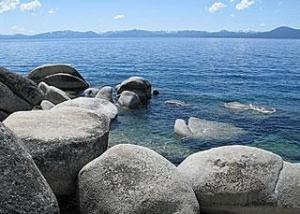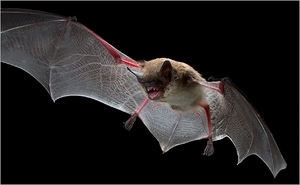A new UC Davis study predicts that climate change will irreversibly alter water circulation in Lake Tahoe, radically changing the conditions for plants and fish in the lake -- and it could happen in 10 years.
One likely result would be a warmer lake overall, with fewer cold-water native fish, and more invasive species, such as large-mouth bass, bluegill and carp.
Still unclear is how the changes would affect the lake's phenomenal clarity and cobalt-blue color, which have helped to make the Tahoe Basin an international vacation destination.

|
| ©Sylvia Wright/UC Davis photo
|
| Still unclear is how the changes would affect the lake's phenomenal clarity and cobalt-blue color.
|
The new findings were announced March 18 at a Tahoe scientific conference by three lake experts from the Tahoe Environmental Research Center at UC Davis -- Director Geoffrey Schladow, Associate Director John Reuter and postdoctoral researcher Goloka Sahoo.

